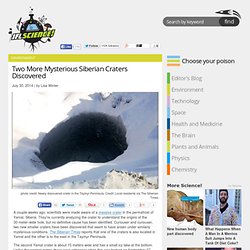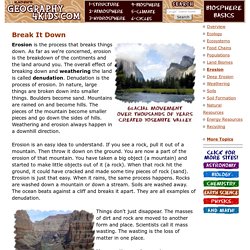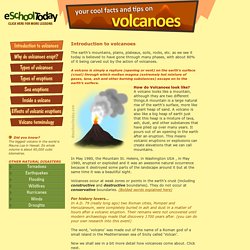

Japan's Newest Island Is Now Eight Times Bigger. Japan's newest island keeps on growing, and it has now taken on a cartoonish look. Previously called Niijima, the volcanic island that first broke above the Pacific Ocean on November 20 has merged with a neighboring uninhabited island called Nishino Shima as it continues to expand. The small volcanic island sits about 600 miles (970 kilometers) south of Tokyo in Japanese waters, part of a chain of about 30 small islands called the Bonin Islands, or the Ogasawara chain. The newest island is now about eight times bigger than it was when it first emerged. On November 20, it was about 1,640 feet (500 meters) off Nishino Shima, but the two islands have joined together, their growing connection marked by a narrow pool of reddish seawater.
Since the name Nishino Shima predates the newest part of the island, convention dictates sticking with that name for the combined landmass. Twitter user @etienneeshrdlu quipped: "Exactly as Nostradamus predicted. Scientists know there are more giant craters in Siberia, but are nervous to even study them. Could not load plugins: File not found Siberian craters: scientists call for urgent investigation Researchers say the mysterious craters could be linked to climate change as methane gas is released from the thawing permafrost, causing underground explosions.

Two More Mysterious Siberian Craters Discovered. A couple weeks ago, scientists were made aware of a massive crater in the permafrost of Yamal, Siberia.

They're currently analyzing the crater to understand the origins of the 30-meter-wide hole, but no definitive cause has been identified. Curiouser and curiouser, two new smaller craters have been discovered that seem to have arisen under similarly mysterious conditions. The Siberian Times reports that one of the craters is also located in Yamal and the other is to the east in the Taymyr Peninsula. The second Yamal crater is about 15 meters wide and has a small icy lake at the bottom.
Unlike the original crater, there were witnesses when this was formed on September 27, 2013, although there is some discrepancy about what happened. Earth Science. Biosphere: Erosion. Erosion is the process that breaks things down.

As far as we're concerned, erosion is the breakdown of the continents and the land around you. The overall effect of breaking down and weathering the land is called denudation. Denudation is the process of erosion. In nature, large things are broken down into smaller things. Boulders become sand. Erosion is an easy idea to understand. Things don't just disappear. Mass wasting can happen two ways: 1) mechanical, similar to breaking a rock with a hammer; and 2) chemical, similar to pouring acid on a rock to dissolve it. Rocks and Minerals. What is a volcano? Introduction to volcanoes The earth's mountains, plains, plateaus, soils, rocks, etc. as we see it today is believed to have gone through many phases, with about 80% of it being carved out by the action of volcanoes.

A volcano is simply a rapture (opening or vent) on the earth's surface (crust) through which molten magma (extremely hot mixture of gases, lava, ash and other burning substances) escape on to the earth's surface. How do Volcanoes look like? A volcano looks like a mountain, although they are two different things.A mountain is a large natural rise of the earth's surface, more like a giant heap of sand. A volcano is also like a big heap of earth just that this heap is a mixture of lava, ash, dust, and other substances that have piled up over many years. In May 1980, the Mountain St. Volcanoes occur at weak zones or points in the earth’s crust (including constructive and destructive boundaries). Now we shall see in a bit more detail how volcanoes come about.
Natural disasters. Earthquakes(Earthquakes are not associated with weather, but instead are natural disasters.)

What is an earthquake? Earthquakes are the shaking, rolling or sudden shock of the earth’s surface. They are the Earth's natural means of releasing stress. More than a million earthquakes rattle the world each year. The West Coast is most at risk of having an earthquake, but earthquakes can happen in the Midwest and along the East Coast. Click Here to learn more about earthquakes from USGS. What causes an earthquake? Click Here to see an animation of an earthquake. What are plate tectonics? Ethiopia's blue volcano burns deadly sulphuric gas - environment - 27 May 2014. (Image: Olivier Grunewald) IT'S a volcano, but not as we know it.

This cerulean eruption takes place in the Danakil Depression, a low-lying plain in Ethiopia. The volcano's lava is the usual orange-red – the blue comes from flames produced when escaping sulphuric gases burn. French photographer Olivier Grunewald creates such images without using colour filters or digital enhancement, which is no simple task. To get this shot he had to wait until dusk, when the electric blue flames were visible, but before all the daylight had ebbed away.
Grunewald works in a gas mask to avoid breathing in the deadly fumes – but photographing Kawah Ijen still left him with peeling skin and clothes smelling of rotten eggs for weeks afterwards. Another drawback of Grunewald's subject matter is that the acidic gases don't agree with his cameras. This article appeared in print under the headline "Volcano in blue" More From New Scientist.
Earthquakes. Animated guide: Volcanoes.